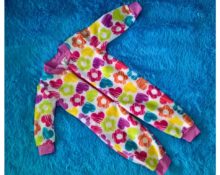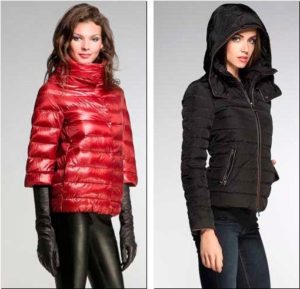 Windbreakers are an essential part of a modern woman's wardrobe, allowing her to look great in any weather. You can't make a windbreaker for rainy weather out of cotton or linen.
Windbreakers are an essential part of a modern woman's wardrobe, allowing her to look great in any weather. You can't make a windbreaker for rainy weather out of cotton or linen.
We are accustomed to considering almost any synthetic fabric a necessary evil. But the time of rubberized mackintoshes is long gone; clothing made from polymer fabrics can meet all the requirements for convenience and safety.
Manufacturers offer a wide range of different fabrics for creating jackets and windbreakers.
What is cushion fabric?
 Dyuspo is a relatively new product for the Russian market (for example, plain fabric is more common in our country). This is a practical fabric, from which women's jackets are often sewn, and we invite you to create interesting models with your own hands.
Dyuspo is a relatively new product for the Russian market (for example, plain fabric is more common in our country). This is a practical fabric, from which women's jackets are often sewn, and we invite you to create interesting models with your own hands.
Duspo is a 100% polyester fabric with a number of advantages:
- The fabric does not deform, does not stretch, difficult to wear out.
- Lightweight and durable.
- Practically does not fade.
- It is not afraid of the wind, but at the same time the cushion conducts air perfectly.
- Moisture simply rolls off the surface of most types of cushions.
- Windbreakers made of dyuspo Can be worn at temperatures down to minus 15 degrees.
- Dyuspo is easy to care for.
Types of windbreakers
There are several fashionable styles:
Classic mid-thigh windbreaker. The silhouette is straight or slightly fitted. Fastens with a zipper, clasp or regular button placket.
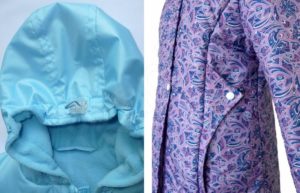 Can be chosen for any body type. Windbreakers are worn by women of any age.
Can be chosen for any body type. Windbreakers are worn by women of any age.
Windbreaker to waist. Suitable for young girls. Massive trim, as well as a belt at the bottom of the product, are welcome.
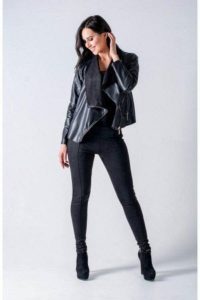 Windbreaker-biker jacket. Traditionally made from denim or leather.
Windbreaker-biker jacket. Traditionally made from denim or leather.
 Windbreaker parkas. An excellent element of sports or walking urban style.
Windbreaker parkas. An excellent element of sports or walking urban style.
 Quilted windbreakers.
Quilted windbreakers.
Advice! If you do not plan to wear a windbreaker in cold weather, then it can be made without lining.
Straight-fit sports windbreaker
Stand-up collar, sleeves with patties (optional). In this model you can stitch. Pockets are either in the side seam or conveniently shaped patch pockets.
Taking measurements
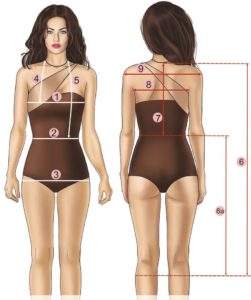 To sew a windbreaker for us The following standard measurements will be needed:
To sew a windbreaker for us The following standard measurements will be needed:
- Chest circumference. Along the natural relief of the chest, parallel to the plane of the floor.
- Waist circumference. Along the natural waist line parallel to the plane of the floor.
- Hip girth. According to the natural relief of the hips and buttocks parallel to the plane of the floor.
- Length of the product. Along the back from the base of the neck to the desired length.
- Shoulder length. From the intended neckline to the end of the shoulder.
- Back width. From one armhole to another.
- Neck circumference. At the base of the neck.
- Front width. Along the chest, from one armhole to the other.
- The length of the sleeve. – Along the outside of the bent arm.
- Sleeve width. Estimated sleeve width at the wrist.
- Body length. – Length from armpits to the bottom of the windbreaker.
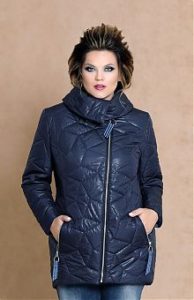 For this windbreaker, you can use a pattern - a base, adding a one-piece selvedge.
For this windbreaker, you can use a pattern - a base, adding a one-piece selvedge.
 Cut details:
Cut details:
- back - 1 whole piece (with fold);
- one-piece shelf with edging - 2 parts;
- sleeve—2 parts;
- stand-up collar - 1 piece (whole), finished length 25 cm, width 6 cm;
- pata sleeves - 2 parts, finished length 18 cm, width 4 cm (optional).
Fabric consumption: main - 3 m 20 cm (with a width of 100 cm); lining - 2 m 50 cm (with a width of 140 cm).
Step-by-step sewing instructions for beginners
It is better to take an old jacket or windbreaker as a basis; it is better to sew without darts, with a loose fit.
To enlarge any pattern (without new patterns), you need to add the missing centimeters in the center of the pattern according to your new standards. And make the armhole and darts (if necessary) yourself.
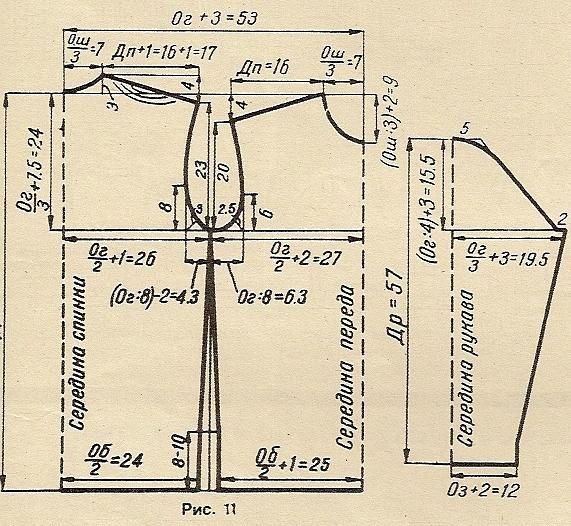
Simple windbreaker pattern
Sequence of work:
- Cut out the details. The usual seam allowance is 1.5 cm.
- Lining also cut along the top, the lining of the shelf - to the hem line.
- Place the shelf lining with the shelf face to face, aligning the cut of the lining with the cut of the hem, sew the seam. Smooth it towards the lining.
- Details of the top of the shelves, back, sleeves fold with the corresponding parts of the lining fabric with the right sides inward (fold the shelf with the stitched lining along the fold line), baste, then stitch.
- Turn out all the details.
- Sew burlap with a 1 cm seam to the pocket protrusions on the front side of the shelf and back. On the shelf, sew the entrance to the pocket along the fold line on the front side.
- Sew shoulder seams.
- Press the shoulder seams.
- Sew the sleeve into the open armhole, press the seams.
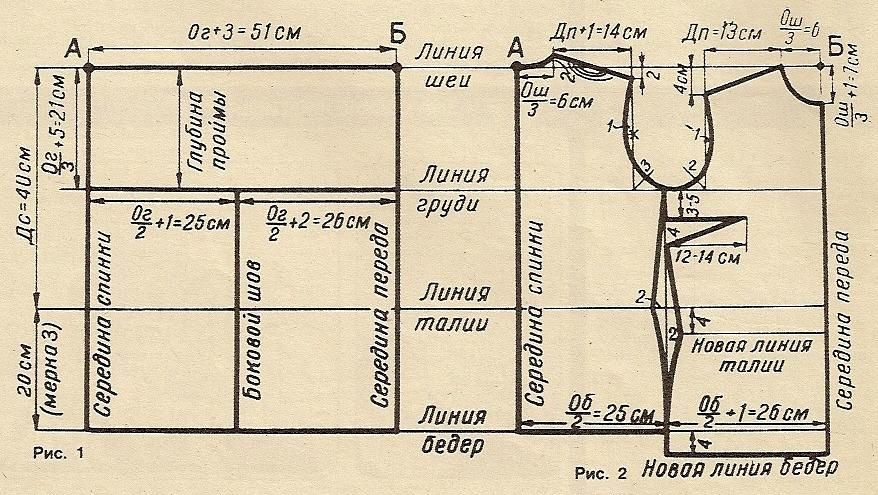
Pattern for a windbreaker with a fitted silhouette
Advice! If you are making patties, then fold their parts in half lengthwise with the right side inward, stitch, turn them inside out and stitch to the edge, retreating 0.2 cm. Baste the finished patties to the sections of the sleeves at a distance of 4 cm from their bottom.
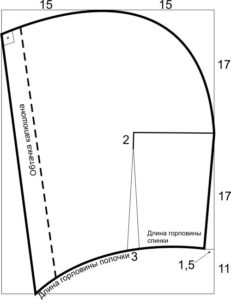
Hood pattern
- Connect the side sections of the shelves and back and the sections of the sleeves, baste and sew with a through seam along with the burlap pockets. Press the side seams and burlap towards the front.
- Collar Fold it in half lengthwise with the right side facing inward and stitch the side edges together. The collar is turned inside out.
- Place the inside of the collar against the neckline from the lining side, baste and stitch the seam. Fold the free cut of the collar inward by 0.7-1 cm, baste on the front side of the coat, overlapping the stitching seam, stitch, departing from the edge 0.2 cm. 18.
- Mark, stitch stitches.
- Sew a button onto the patch and sleeve, placing a 4 cm fold on the last one.
- Try on a windbreaker.
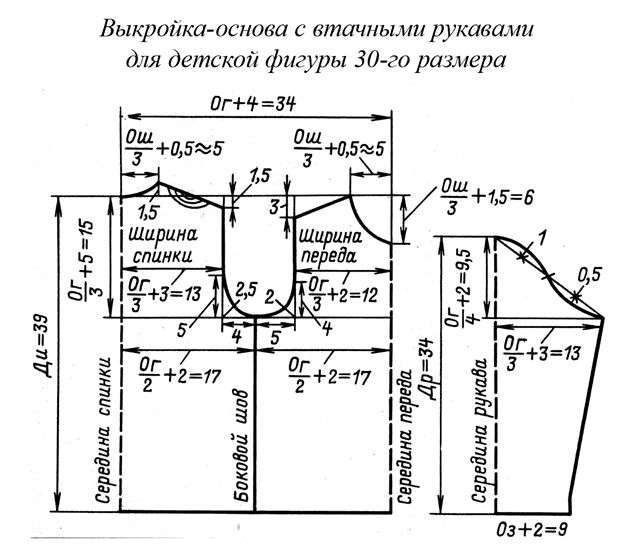
Children's windbreaker size 30
Based on the simplest pattern, you can make almost any model of windbreaker. By sewing on a collar of a different shape, making cuffs and different types of fasteners, lengthening or shortening the windbreaker, we get completely different windbreakers.
Duspo fabric takes the shape of complex finishing details well, feel free to experiment.


 0
0
